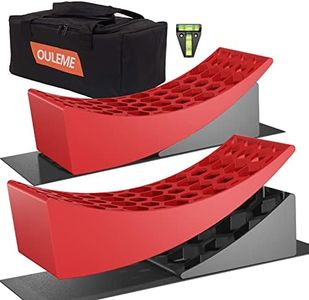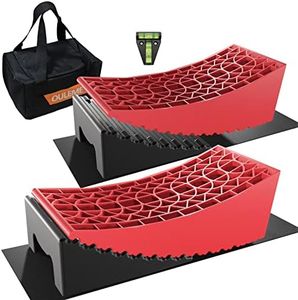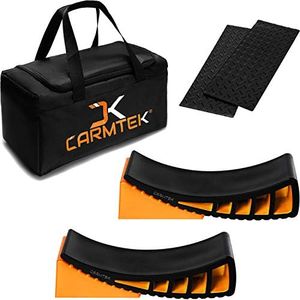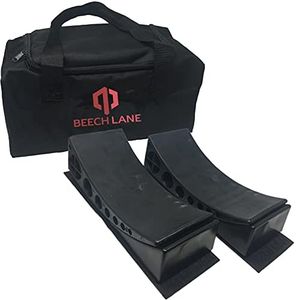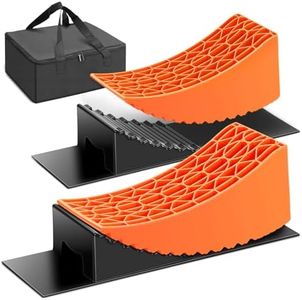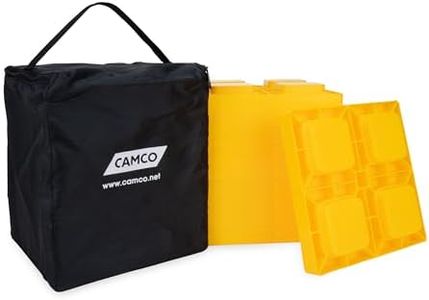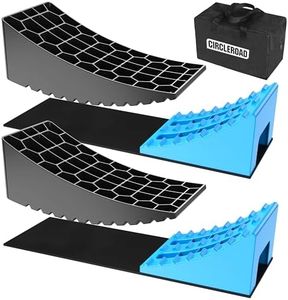We Use CookiesWe use cookies to enhance the security, performance,
functionality and for analytical and promotional activities. By continuing to browse this site you
are agreeing to our privacy policy
10 Best Rv Leveling Ramps
From leading brands and best sellers available on the web.Buying Guide for the Best Rv Leveling Ramps
Choosing the right RV leveling ramp is important to ensure your vehicle remains stable and comfortable at your camping spot. Leveling your RV prevents issues with appliances, water drainage, and even helps you sleep better. Picking a good ramp involves understanding your RV’s size, the types of ground you’ll encounter, how much weight the ramp needs to support, and ease of use. By learning about the key specifications, you can confidently select a product that fits your specific RV lifestyle.Weight CapacityWeight capacity refers to the maximum amount of weight the ramp can support safely. This is crucial because if your ramp can't handle the weight of your RV, it could break or fail, leading to unsafe situations. Weight capacities usually range from a few thousand pounds up to well over 10,000 pounds. For lighter campers and travel trailers, lower weight capacities may suffice, but for larger motorhomes and fifth wheels, higher capacities are necessary. Always check your RV’s total weight (including when loaded) and choose ramps that can handle that weight with some extra margin for safety.
Height Range/Lift RangeHeight or lift range describes how much the ramp can raise your RV wheel off the ground. This is important to achieve a truly level position when parked on uneven ground. Some ramps offer only a small lift, which is enough for gentle slopes, while others can provide several inches for more extreme leveling needs. Think about where you usually camp: if in flat areas, a low lift is fine; for uneven or sloped campsites, a higher lift range is helpful.
Ramp Size and DesignRamp size and design include both the length and width of the ramp, as well as features like surface grip and step levels. Larger ramps can be more stable and work better for wider tires, while compact ramps are easier to store. Some ramps have a stepped design that allows you to level by choosing the right step, and anti-slip surfaces help keep tires from slipping. Consider your tire size, storage space, and whether you want a quick setup or more adjustability.
Material and DurabilityMaterial refers to what the ramp is made of—commonly durable plastic, reinforced polymer, or sometimes metal. This affects how heavy, strong, and weather-resistant the ramp is. Plastic ramps are usually lightweight and easy to handle, but look for ones labeled as heavy-duty for durability. If you camp in rough or rocky areas, choose ramps that can handle harsher treatment. Always make sure the material suits the climate you’ll be in and stands up to repeated use.
Ease of Use and PortabilityEase of use covers how simple the ramp is to set up, adjust, and store. Some ramps are stackable; others come with carrying handles or cases. If you move around a lot or set up camp alone, a ramp that is easy to use and quick to set up is a big advantage. Portability is also important if you have limited space in your RV—compact ramps can be tucked away more easily.
